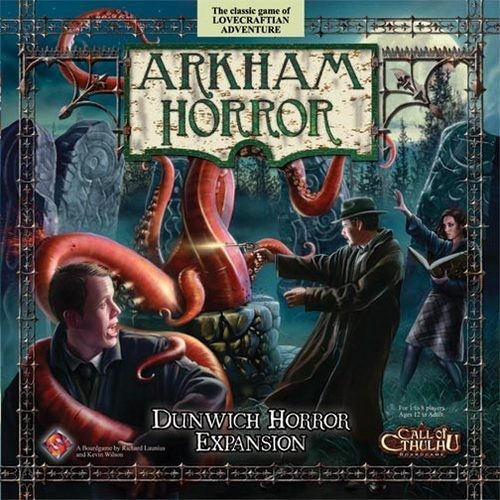Michael Mateas分析游戏设计现状和运算媒体理论
4月15日,加利福尼亚大学圣克鲁兹分校(UCSC)游戏和玩乐媒体中心总监Michael Mateas在加州米尔皮塔斯召开“为游戏编织未来”专题讨论会,Gamasutra出席此次会议。在演讲中,他论述了UCSC计划的推动力,谈论研究如何推动其他行业创新以及为何他认为研究势必也会推动游戏的发展。当日,就游戏和玩乐媒体中心目前的工作状况,他也举例加以说明。
Mateas在开始讨论当代游戏开发者面临的挑战和机遇以及概述加州大学目前所做工作之前,提出如下问题:“大学在游戏和玩乐媒体中应居何位?”他说道:“众人期待的研究性大学任务是开展最前沿研究,目标在于用最重要的突破性创新冲击整个社会和行业。”依Mateas所述,在许多领域中这已成为惯性思维,互联网、生物科技和绿色能源都是通过在大学中开展的研究得以深化。
游戏是媒体,应该为受众所体验。他说道:“不幸的是,有时人们对游戏研究的期望值过高,希望能够塑造出无需逐渐显现的全新体验。”这也使Mateas的任务相当艰巨。当然,开发者和玩家都明白,现有游戏技术和设计正不断进步中。
好似用碎裂的彩色粉笔来雕刻米开朗基罗作品《大卫》
Mateas表示,虽然游戏研究和设计调查已在大学中根深蒂固,但他的目标是提出运算媒体,这还“未被充分挖掘”。他认为,运算媒体可以创造出令游戏制作的运算和物质条件产生重大变革的技术、框架和特色。换句话说,这些新工具和方法可以让你制作出此前甚至未曾想过的游戏。
Mateas将目前的设计方法比作“尝试用一盒碎裂的彩色粉笔来雕刻名作”,用这些不适宜雕刻石头的工具,开发者不仅做不出达芬奇的名作,甚至连制作米开朗基罗的雕塑都无从下手。(游戏邦注:这里作者是指拙劣的设计方法无法制作出精美的作品。)
他说道:“该设计领域中潜藏着今日我们不知如何触及的游戏。”比如互动戏剧、动态MMO游戏以及尼尔·史蒂芬森小说《钻石年代》中小女孩的《启蒙琼林》——可学习和传授知识的全互动式图书。这些都是分布在这个设计领域中的概念游戏。我们如何才能触及呢?它们不会逐渐靠近我们。我们就像在用碎裂的彩色粉笔来雕刻米开朗基罗名作《大卫》。Mateas认为商业游戏中最为突出的技术进步是图像,目前的努力是建立在“优化来之不易的文艺复兴时期艺术家的技术”基础之上。
《选择你自己的冒险》系列书籍背后的内涵
以他的观点来看,当代游戏设计将许多事物抛在脑后。Mateas说道:“游戏中的交流去哪里了?除了在游戏中表达‘你看,事情在这个世界中运转。’这种想法外,需要阐述的内容还有很多。人性表达在何处?”这些当然可以通过游戏中的故事情节来实现,但Mateas的做法有所不同,他希望通过技术做到这些。“如果我们用运算来呈现这片大领域中的所有内容,对人类有何意义呢?”
据Mateas观察,现今游戏内容是开发人员手动编写,其内涵不足。内涵为何重要呢?如果开发者希望呈现出来的内容在与玩家互动中具有更多易变性,就必须编写大量的内容。以其观点来看,当代游戏内容甚至与《选择你自己的冒险》系列书籍(游戏邦注:美国以第二人称书写的儿童游戏丛书。)所差无几。
他想通过程序解决所有的问题,像现在许多模仿物理学的游戏那样将解决方案应用到游戏中。正因为视频游戏通过系统发挥作用,才使其与之前所有的媒体形式存在差异。通过程序的完善,游戏可以最佳状态运营,也可以参与到游戏所能参与的最独特和有力的交流中。
创造深层次社交互动
Mateas的UCSC计划目前正在游戏《Prom Week》上发挥作用,这是场“社交物理”的实验。他阐述道:“正因为《愤怒的小鸟》未给谜题预先设计解决方案,所以我们也给玩家提供了没有预设解决方案的社交谜题。”
我们能创造出某些有着深层次社交互动的事物吗?游戏采用的方式之一是记住玩家有过的每次社交互动。这是对话认知的原型,我们想让玩家感受到这个游戏确实正在关注玩家的做法。Mateas展示了游戏可能完结的不同方法作为例证,只要给予目标,玩家就会通过各种不同的方法来实现。开发者不能通过脚本来构建社交互动,也不能将社交互动深度玩乐化,这会毁了整个项目。依他的看法,这种社交结构是种新型工具。
Mateas辩解称,尽管玩家在多人游戏中可以和其他玩家互动,但这些仍是建立在系统的基础上,因而这项研究仍有价值。桌游系统复杂,他认为《魔镇惊魂》就像是个桌上电脑。设计运动是为了平衡物理学准则。即便在具有颠覆性玩法的多人游戏中,玩家互动也并非完全自由,事实上正受到设计师塑造的规则和系统限定。
在数字多人游戏领域中,社交互动的主要形式类似于通话管。开发者设计出游戏,让人们以此为平台通过文字和语音交谈。然而所有在通话管中的事物都与规则毫不相干,开发者也未曾将其考虑在内,这导致很多机遇散失。Mateas表示,如果《魔兽世界》之类的游戏能够在两个公会结仇时通过观察玩家的文字交谈做出判断,然后动态任务生成器便能够生成通过二者合作或二者走得很近才能完成的任务看看会产生什么情况,这才是真正的进步。
将手工编写提升至元级层次
人对人玩法中的数据挖掘是加州大学研发的另一个项目,目标是让AI通过分析《星际争霸》中人与人之间的战斗来学习战略。这不仅仅是制作好的电脑玩家,如果AI玩家能够运用整个亚对策论,那么这种想法可以实现。随着人与人战斗对游戏战略领域的探索,AI也会随之改变战术。
大学还在研究中开发允许设计师自定义规则的系统,因为选择的规则会衍生出紧急动态事物,而目前游戏设计师并没有工具或技术用以思考或推断这些紧急动态事物。这其中没有运算来支持,并非帮助建筑师思考可能性的CAD软件。团队已经设计出称为“BIPED”的简单快速原型制造工具,这允许设计师输入所有的游戏规则并提出质疑,为的是找到玩家能做的事情,帮助开发者更快地探索设定规则生成的紧急动态事物。
团队正在执行用程序性故事引发根本性改变的想法,如果想要将所有事物程序化,那么在这些超程序化框架下制作游戏已非人力所能企及。Mateas说道:“我并非反对令人欣喜的手工制作,因为正是这些内容使得游戏不尽相同。但现在手工编写需要升级至元级层次。”工具Story Canvas可以实现,非技术性设计师可以使用这个工具来制作生成性互动故事。
(游戏邦注:简单来说,研究的目标就是让编写工具更智能化,帮助设计师做更多元级编写工作。)
总结
Mateas说道:“游戏研究应该包含在游戏调查中,这样我们就可以更深地理解正在制作的游戏的文化和美学内涵。随后在理解的基础上加以融会贯通,将其运用于混合的运算媒介和设计研究中,让人们制作出甚至无法在今日构想出来的新型游戏。”
我们正生活在游戏快速发展的时代,他相信这些理论对社会的影响会和互联网及其他重要的大型学术研究所得科技的面世同样深远。最后,他表示自己坚信学术和行业应该携手合作。游戏应从根本上丰富人类的生活状况,帮助人们变得更聪明、更有洞察力。
在演讲总结后简短的提问回答环节中,学术人员和开发者Ian Bogost询问Mateas是否夸大了运算媒体的作用。它可以是方法或者解决方案,但并非登上他所描述设计高度的唯一解决方案。Mateas说道:“我相信我们正在开发的运算工具、框架和特色确实从根本上限制了能够设计的游戏种类,所以会存在这种设计领域无法触及的区域。互动戏剧就属于我们正在努力靠近的未知区域,当然还有其他题材。我此生的任务就是让该理论在这些领域可行,我仍有着吞并这些设计区域的雄心壮志。”(本文为游戏邦/gamerboom.com编译,转载请注明来源:游戏邦)
Future Of Games: Driving Gameplay Innovation With Technology Research
Michael Mateas, director of the University of California, Santa Cruz’s Center for Games and Playable Media opened up the center’s Gamasutra-attended symposium, Inventing the Future of Games, in Milpitas, California today. In his speech he discussed the drive of USCS’s program, and talked about how research drives innovation in other industries — and how he believes research should also drive games. He also gave examples of how current work at the Center for Games and Playable Media is doing that today.
“What should be the role of the university in games and playable media?” Mateas asked, before launching into a discussion of both the challenges and opportunities facing game developers at present, as well as outlining the work being done at the university. “If you look at the mission of the research university, what we’re supposed to be doing is engaging in cutting-edge research,” he said. The goal is “most fundamentally, impacting society, including industry, by bringing groundbreaking innovations.” According to Mateas, “in many other fields this has become routine” — the internet, biotech, and green energy are shaped at deep levels by research done at universities.
“Unfortunately games research is sometimes considered an oxymoron,” he said, since games are media — and must be experienced by audiences. This is in tension with his mission — to create “new experiences that can’t be done incrementally.” Of course, all developers and gamers are aware with the current state of incremental improvements to existing game technology and design.
Like Trying To Carve Michelangelo’s David With Broken Crayons
While at a university level, game studies and design research are well-established, Mateas said, his goal is to bring forward computational media, which he says is “underrepresented.” Computational media “creates technologies, and frameworks, and idioms that fundamentally change the computational and material conditions for the creation of games,” he said. In other words, they are “new tools and approaches that allow you to make games you couldn’t even think of making.”
Mateas likened current design approaches to trying to create masterpieces with a “cup of broken crayons” — not only would you not be able to create a Da Vinci, you couldn’t even conceive of creating a Michelangelo sculpture with tools unsuited for carving stone.
“There are potential games in this design space that we don’t know how to reach today,” he said. Examples include interactive drama, dynamically game-mastered MMO, or the Young Lady’s Illustrated Primer from Neal Stephenson’s novel The Diamond Age — a fully interactive book that both learns and teaches. These are all “conceptual games that are somewhere in this design space. How will we get to them? They aren’t incrementally reachable. It’s like trying to carve Michelangelo’s David with broken crayons.” When it comes to commercial games, said Mateas, “The most obvious technical advancements in game have been in graphics.” Current work is based around “optimizing the hard-won techniques of artists in the Renaissance.”
Scaling Beyond The Choose Your Own Adventure Book
A lot is being left behind, in his view. “What about communicating everything else? There’s a whole lot more we want to say in games besides ‘Hey, look. Things move in the world?’ What about human nature?” Of course this is done through storytelling in games, but the distinction Mateas makes is doing it technically. “How do we go about computationally representing this huge space of everything it means to be human?”
Mateas observed that “the current conditions of content authoring are lovingly handcrafting content. It has trouble scaling. Why does scaling matter? As you try to make the content that you’re representing even more open to variability through player interaction and agency, you have to produce an exponential amount of this content.” In his view, current games are “really not even a step up from the Choose Your Own Adventure book.”
He wants to “move toward procedural everything”, and approach solutions to games in the way current titles simulate physics. “What makes [video games] different than all forms of media before,” is that they function through systems. “That’s when a game is operating at its best, when it’s engaging in the unique and powerful communication games can engage in.”
Creating Deep Social Interaction
Mateas’ program at UCSC is working on a game called Prom Week presently, which is an experiment in “social physics.” “As Angry Birds does not pre-script a specific solution to the puzzle, we want to present the player with social puzzles that do not have pre-scripted solutions,” he said.
“Can we create something that has pretty deep social interaction?” One way the game does that is by remembering every social interaction the player has ever had. “It’s raw material for dialogue realization. We want the player to feel that this game is really listening to what they do.” Mateas showed several examples the way the game could play out — when given a goal, the player can approach it through different angles. “You just can’t do that by scripting. This is going to exponentially blow up on you. You can’t make social interaction deeply playable.” This social architecture “is a new tool” in his view.
And though multiplayer games have other players to interact with, they’re still based on systems, so this research is still valuable, Mateas argued. Board games are complex systems — Arkham Horror “is a cardboard computer,” he said. Sports are designed to “leverage the laws of physics.” Even in multiplayer games that engender “subversion and meta-play”, this form of player interaction “is not completely free. It’s not unconditioned by the rules, it’s actually conditioned by the rule sets and systems the designer has set up.”
And in “the digital multiplayer space, the primary form of social interaction is kind of the speaking tube. You have a game, and you allow people to text and voice chat on top of that game… But everything passing through that tube is outside the rule system. It’s not being taken into consideration. It’s a huge missed opportunity.” Mateas sees that “it would be a huge advantage in a game like WoW to listen in on player text chat to learn, say, when two guilds are feuding. A dynamic quest generator could create a quest that the only way to accomplish it is for them to cooperate… Or to bring them into close physical proximity and see what happens.”
Taking Handcrafting To A Meta-Level
Another project underway at the school is data-mining of human-to-human gameplay — it analyzes pro StarCraft matches to learn tactics. This wouldn’t just create a great computer player. “What this would enable would be an AI player that tracks the overall metagame.” AI could change its tactics “as human-to-human play explores the strategic possibility space of the game.”
The school is also developing systems to allow designers to model rules, because, Mateas said, “there are emergent dynamics that come out of your rule choices, and currently game designers have no tools or techniques for thinking or reasoning about emergent dynamics. There’s no computational support. There’s nothing like CAD… which helps architects think through the possibilities.” The team has devised a “simple, quick” prototyping tool called BIPED. This allows the designer to input all the game’s rules and then query them to find what the player can do… “helping you much more rapidly explore the emergent dynamics of your ruleset.”
The notion of authoring fundamentally changes in the context of procedural storytelling, and the team is addressing this. “If you’re going to move toward procedural everything, how do you enable human authors to create games in these hyper-procedural frameworks?” Said Mateas, “I’m not against loving handcrafting; that is what makes a game special. But now that handcrafting has to move to a meta-level.” One tool being worked on is Story Canvas — a tool for “non-technical designers to create generative interactive stories.”
In short, the goal is to move “more and more smarts into the authoring tool, to facilitate the designer in doing more meta-level authoring.”
Conclusion
When it comes to research into games, “I believe the role should be to engage in game studies, so that we can deeply understand the cultural and aesthetic possibilities and implications of the games we’re creating, and then deeply informed by that understanding, to engage in the intertwined and intermingled computational media and design research — to enable people to create new kinds of games that we can’t even conceive of today,” Mateas said.
We are living in a “current historical moment as games are going exponential.” He believes this will have “as profound an impact on society as the invention of the internet” and other massively important, academic research-driven technologies. To that end, he believes, “academia and industry should be working hand in hand.” Games should “fundamentally enrich the human condition,” and help people become “smarter, more insightful, and better human beings.”
In the brief question and answer period after the presentation concluded, academic and developer Ian Bogost asked if Mateas was not possibly overstating the reach of computational media — it could be method or solution, but not the only solution for reaching the heights he described. Said Mateas, “I do believe that our underlying computational tools and frameworks and idioms do fundamentally condition the kinds of games we can create. So there are regions of that design space that are unreachable.” “Interactive drama is one of the undiscovered countries we’re trying to move toward… there are others. My mission in life is to enable those spaces… I still remain full steam ahead on trying to enable and annex” these areas of design. (Source: Gamasutra)











































 闽公网安备35020302001549号
闽公网安备35020302001549号